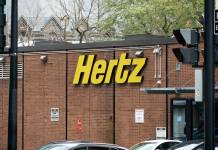
Uber Technologies Inc.– Scientists have managed to break through the service’s dynamic pricing algorithm.
Uber is one of the very least companies widely known for its impressive fast pace growth and its dynamic pricing system also known as surge pricing algorithm.
A lot of writers and experts have attempted to put this subject under scrutiny but the diversity of opinions and clues impedes any progress on the topic.
Now a team of computer scientists at Northeastern University claim to have cracked Uber’s algorithm and found a way to override it. This came as a result of four weeks of collecting data from the company and analysing its surge pricing algorithm.
The scientists tried to create from scratch 43 virtual people that used Uber’s app requesting a ride in downtown San Francisco and midtown Manhattan. What they found out is that Uber updates its invoice every five minutes and the new prices are inserted based on fixed areas.
In small areas, such as midtown Manhattan, the scientists report that clients avoid following the algorithm by walking into areas that it doesn’t affect. This is more effective in Manhattan than in San Francisco, where Uber’s fixed areas are larger, according to the findings, made public on Thursday.
In more than 50% of the cases, all virtual users paid about half of the non-surge pricing by simply walking into another area.
According to ABCNews, the team’s finding, also include the following:
- ) San Francisco has three times more surges than Manhattan even though the former “has a much greater supply of cars”.
- ) The majority of surges lasts less than 10 minutes.
- ) Surge prices “have a strong, negative impact on passenger demand, and a weak, positive impact on car supply. However, it is possible that different effects may occur at the macro-scale (i.e., a whole city)”.
At this point, we should mention a few extra key points to give you a better idea of Uber’s dynamic pricing system.
For starters, Uber is practically considered a marketplace and so all of its drivers are independent agents working either as self-employed or for other employers who own numerous cars. It’s up to the drivers to decide whether or not they want to open Uber’s app and pick up users of the specific service. In fact, many of the drivers use multiple services, some of which are completely separated from Uber’s network.
Moreover, in order to fulfil its original purpose, Uber created uberX, a lower priced brand that, according to the company, aims to offer its unique services to a much broader base.
And last but not least, Uber’s surge pricing algorithm actually affects less than 10% of trips. The dynamic pricing system is more commonly applied during peak times like big events or bad weather conditions. The rest of the time, Uber’s increasingly low basic rates are the primary price points for the service.
In other words, scientists may have found a way to beat Uber’s surge pricing algorithm, but our personal note is that it may turn out to be negligible, considering that it is not applied as often as many might expect.












If you walk, it defeats the purpose of calling for a ride…. Or you can simply wait till the surge is over, like the app itself suggests.
Scientists wasting time trying to crack what is in essence very simple economic idea. It is just technology allows that simple supply and demand idea to be instantaneous.